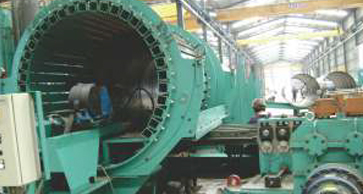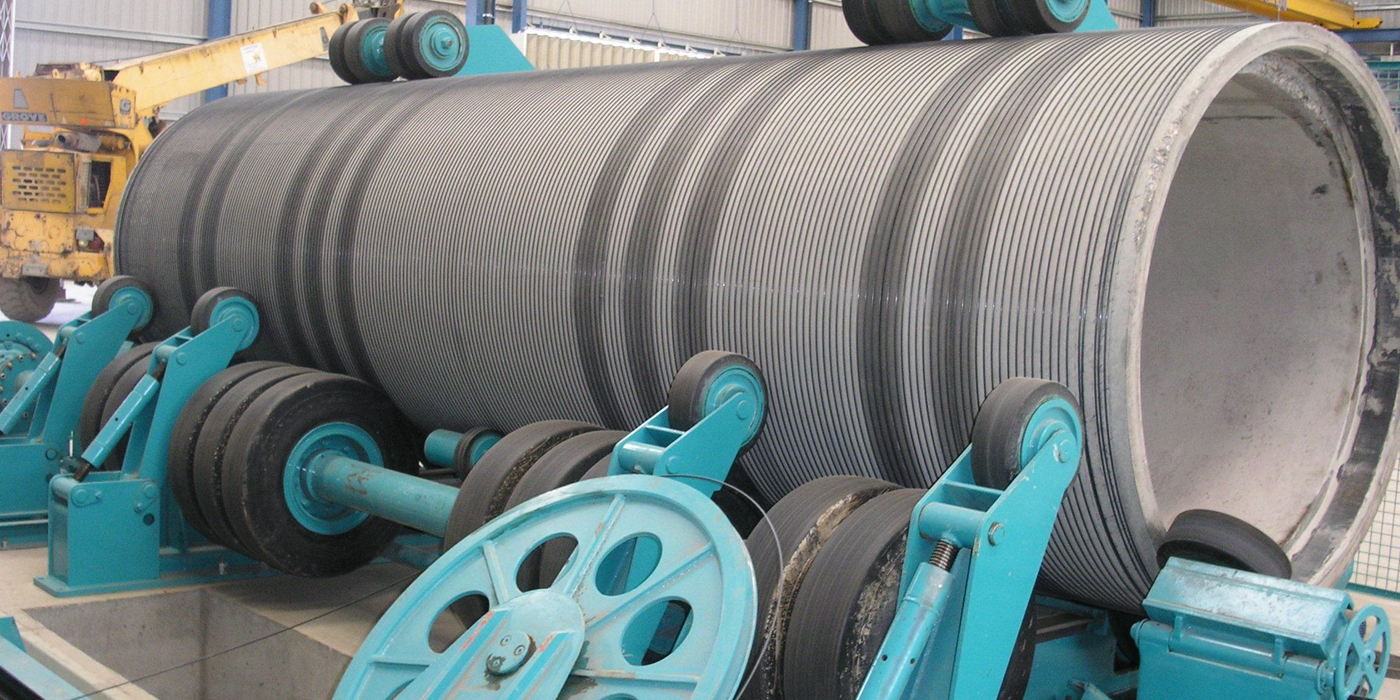Water pressure main pipelines are generally projects for which a life expectancy of 100 years is required. A correct approach to the best result of these projects involves many engineering activities and disciplines from the survey to the planning of the activities to the structural and hydraulic design.
The 60 years of BFS (previously CASAGRANDE) experience in the supply of engineering, machinery, and assistance for the manufacturing of concrete pressure pipes and for pipline construction can summarized as follows:
- 46 factories installed all around the world for PCCP, RCCP, RCP and PCSP types according to EN, AWWA, JIS Standards.
- 15,000 km and more of water pressure pipelines built by using BFS Technology from 600-4200 I.D.x 6000-8000mm length with working pressure up to 2 Mpa.
- All pipelines are still operating in very good conditions without particular maintenance costs after many years.
Types of Pressure Pipes
- Pre - stressed Concrete Pipes (P. S.C.)
Applications: - Water supply; lift Irrigation and drainage schemes which involve medium pressure. - Pre - stressed Concrete Cylinder Pipes (P. C.C.P.)
Applications: - Water transmissions and distribution pipelines, sewer force mains, cooling water systems and liners for pressure tunnels.



FAQs - Pressure Pipes
Pre-stressed Concrete Pipes (P.S.C.) are used for water supply, lift irrigation, and drainage schemes with medium pressure.
Pre-stressed Concrete Cylinder Pipes (P.C.C.P.) are used in water transmissions, distribution pipelines, sewer force mains, cooling water systems, and pressure tunnel liners.
The working cycle involves steel cylinder preparation, end ring welding, vertical testing, concrete pouring, vibration, steam curing, demoulding, post-tensioning, mortar coating, and curing.
PCCP pipes are transported horizontally on special saddles, laid beside the road using a crawl crane, then placed in trenches by a special trailer. They're jointed using a hydraulic jack from inside the pipe.





 BACK TO PRODUCT
BACK TO PRODUCT


